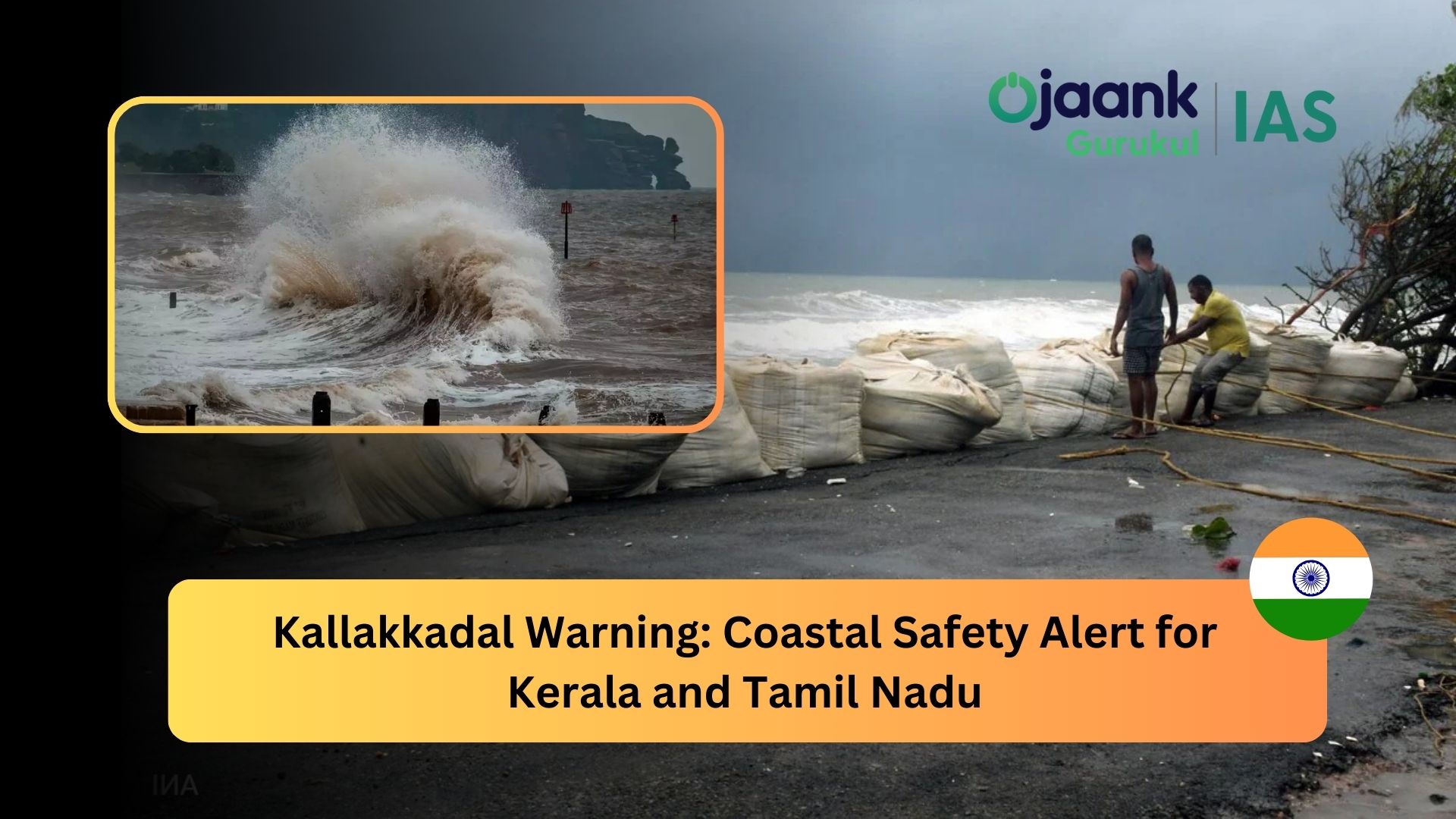Kallakkadal Warning: Coastal Safety Alert for Kerala and Tamil Nadu

Understanding the 'Kallakkadal' Phenomenon
The term 'Kallakkadal', originating from the Malayalam words 'Kallan' (thief) and 'Kadal' (sea), symbolizes a sea that arrives unexpectedly, like a thief. This unique natural phenomenon involves sudden sea swells, creating dangerous conditions along coastal areas.
According to the Indian National Centre for Ocean Information Services (INCOIS), this occurrence results from strong winds in the southern Indian Ocean, generating waves without prior warning.
On January 15, coastal areas of Kerala and Tamil Nadu are under high alert due to potential 'Kallakkadal' activity. INCOIS forecasts waves ranging from 0.5 to 1.0 meters, accompanied by the possibility of a sea surge. The effects may include coastal erosion and significant disruption to local marine activities.
Official Warnings and Safety Measures
To mitigate risks, the Kerala Disaster Management Authority (KSDMA) has issued comprehensive safety advisories:
-
Fishing and Marine Activities:
Coastal residents and fishermen are urged to:
- Avoid venturing into the sea, particularly in small vessels or country boats.
- Safely anchor larger fishing vessels in designated harbors.
-
Tourism Restrictions:
Beach tourism activities are prohibited until the warning is lifted to ensure the safety of visitors.
-
Relocation from High-Risk Zones:
Residents in erosion-prone coastal areas are advised to relocate temporarily to safer locations under local authority guidance.
-
Increased Vigilance:
Coastal inhabitants must remain alert to the risks of sudden wave surges and associated hazards.
Why 'Kallakkadal' is a Threat
The sudden and unpredictable nature of 'Kallakkadal' makes it particularly dangerous. These swells:
- Lack Early Signs: They occur without noticeable changes in weather, making preparation challenging.
- Cause Erosion: Strong waves lead to significant coastal erosion, threatening infrastructure and ecosystems.
- Disrupt Livelihoods: Fishing and tourism, two primary sources of income for coastal communities, are severely impacted.
How to Stay Informed
Real-time updates and alerts from INCOIS and local disaster management authorities are crucial. Residents are encouraged to:
- Monitor Official Channels: Stay updated on weather conditions via government websites and announcements.
- Follow Directives: Adhere strictly to safety measures prescribed by local authorities.
Conclusion
The 'Kallakkadal' phenomenon highlights the vulnerabilities of coastal regions to sudden natural events. By staying informed and prepared, residents of Kerala and Tamil Nadu can safeguard lives and livelihoods from its impact.
Let’s prioritize safety and adhere to expert recommendations to mitigate risks effectively.
For more updates on coastal safety and disaster management, stay connected with trusted sources like INCOIS and KSDMA.
Stay Safe, Stay Prepared!
Read More:
How India Can Lead the Global Startup Ecosystem | Policies & Innovations